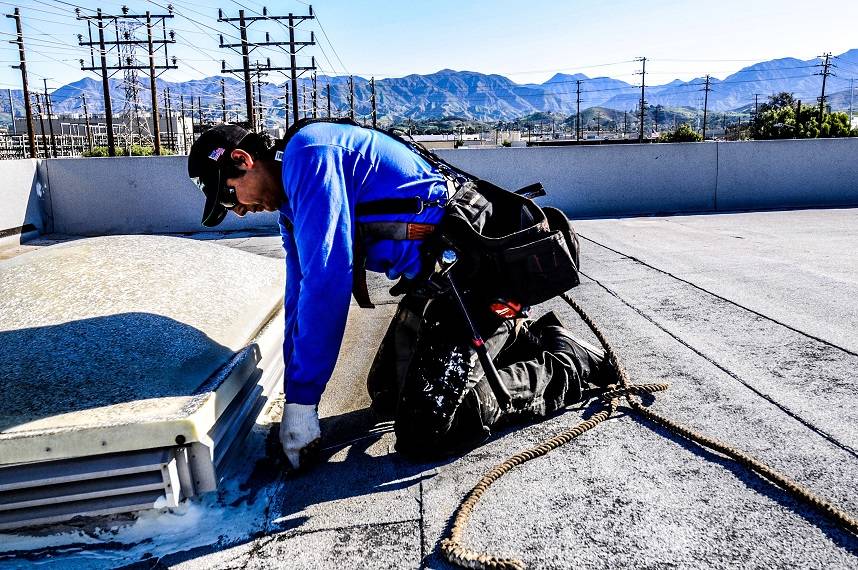Because of the way both these systems are manufactured, they are considered single-ply. This occurs because all of the layers that make up the system are combined during the manufacturing process, resulting in a single layer that can be applied using several different methods, each of which can be ideal under varying circumstances. The Torch down method is the most popular of these choices.
Modified Bitumen Commercial Roof Systems
At Central Roofing Company, we have served hundreds of Southern California commercial property owners and managers with a modified bitumen system with great success. This system is ideal for applications on flat and very low slope roofs, which offer their own set of unique challenges. With the proper materials and preparation, practically any flat roof can be protected through this highly effective, easy to apply roofing method.
Bitumen’s Proven Benefits
There is a reason that modified bitumen systems aka torch down systems are one of the most commonly used flat roofing systems in North America. The benefits of this type of roofing are well-established, well-known and indisputable. Some main benefits include:
- High tensile strength ideal for applications on roofs that are both high traffic and have multiple penetrations.
- Ideal for use in climates where temperatures commonly fluctuate.
- Easy to repair.
- Great selection of top-surfacing products, such as cool roof coatings and mineral surfaced products.
- Application is easy and simple.
- Long-term manufacturer warranties.
Application Methods
When we apply a modified bitumen system to a roof, we may use many different methods depending on your building’s condition and needs and the type of modified bitumen system that is best suited for the job. The APP system is applied using a roofing torch for a heat weld, also known as torch down roofing. This allows it to adhere to the substrate and seal itself in the process.
Manufactured for Strength and Longevity
Modified bitumen systems are created using standard roofing asphalt. In most cases, modifiers are added to the material to replace plasticizers. Then the bitumen, otherwise known as pitch, is reinforced with polyester fiber matting or fiberglass to increase both strength and durability.
From there, the manufacturing process can take two paths. On one path, styrene-butadiene-styrene, or SBS, is added to further increase the flexibility of the membrane, which also increases the ability of the material to respond well to constant expansion and contraction. On the other path, attactic polypropylene, or APP, is added instead. This helps the roof withstand ageing. However, SBS systems are often more popular because of the rubber-like membrane that it creates, which aids in both strength and flexibility. However, SBS systems do require an extra application of a UV protective coating to help ensure long life against the effects of the sun’s rays.
Trust Your Professional Roofing Contractor
Our roofers at Central Roofing Company offer some of the most skilled installation and repair work in Southern California. Our clients can be sure that from the initial inspection and installation and through regular maintenance, they will receive only the best materials and services offered in the area.
Contact us for a free estimate by calling (310) 527-6770 or filling out an online form.
Let’s Fix Your Roof Right — Get a Free Estimate Today
Serving Los Angeles & Orange County for 30+ years.
Trusted. Local. Professional.
Central Roofing Company Headquarters
555 W. 182nd Street
Gardena, CA 90248
📞 310-527-6770

Get A Quote
One of our roofing estimators will gladly meet you to discuss your options and follow up with a free, no-obligation, written estimate.
At Central Roofing Company, we understand that a sturdy and reliable roof is crucial for the success and safety of your commercial property. Our team of highly skilled and trained roofing professionals is committed to delivering exceptional craftsmanship and superior service in every project we undertake.
555 W. 182nd St. Gardena, CA 90248
Ph: 310-527-6770
Our Office Locations:
Our Services
CA license #684960 – Central Roofing, 2025 ©All Rights Reserved | Terms of Use | Privacy Policy | Built by Dymic